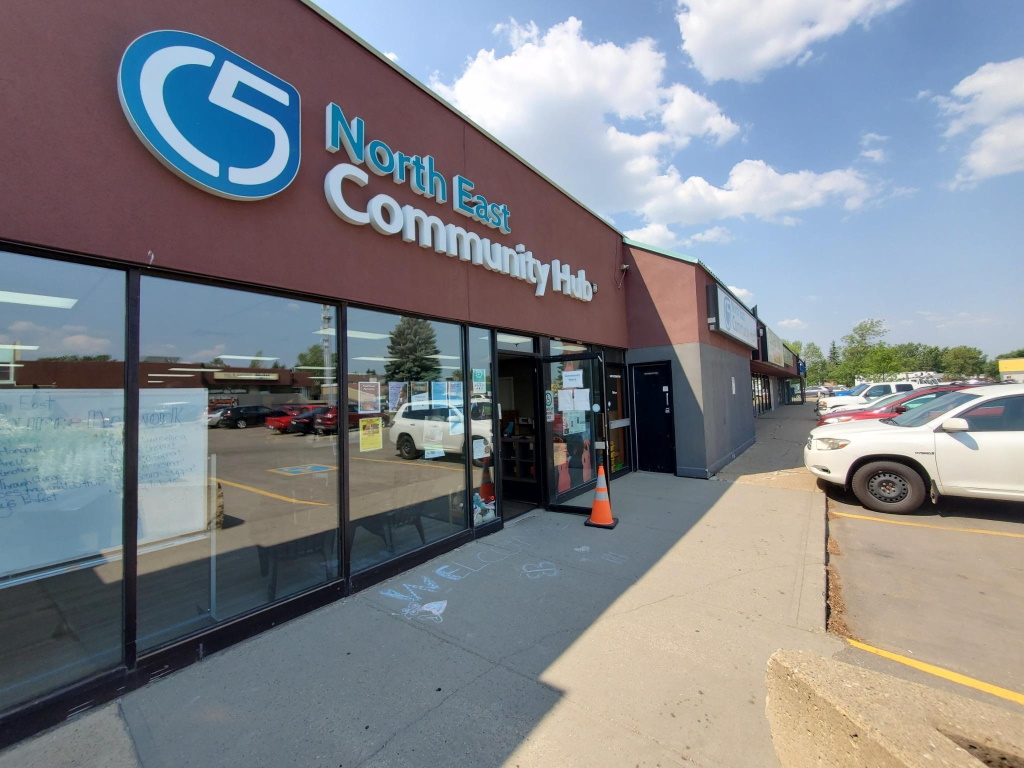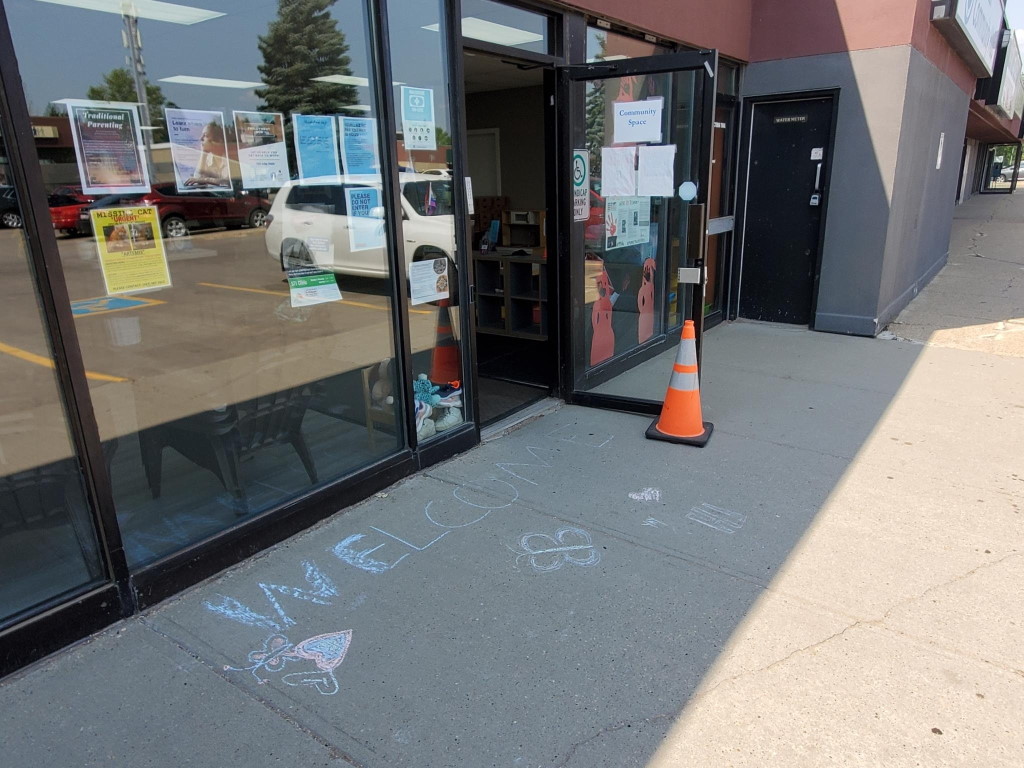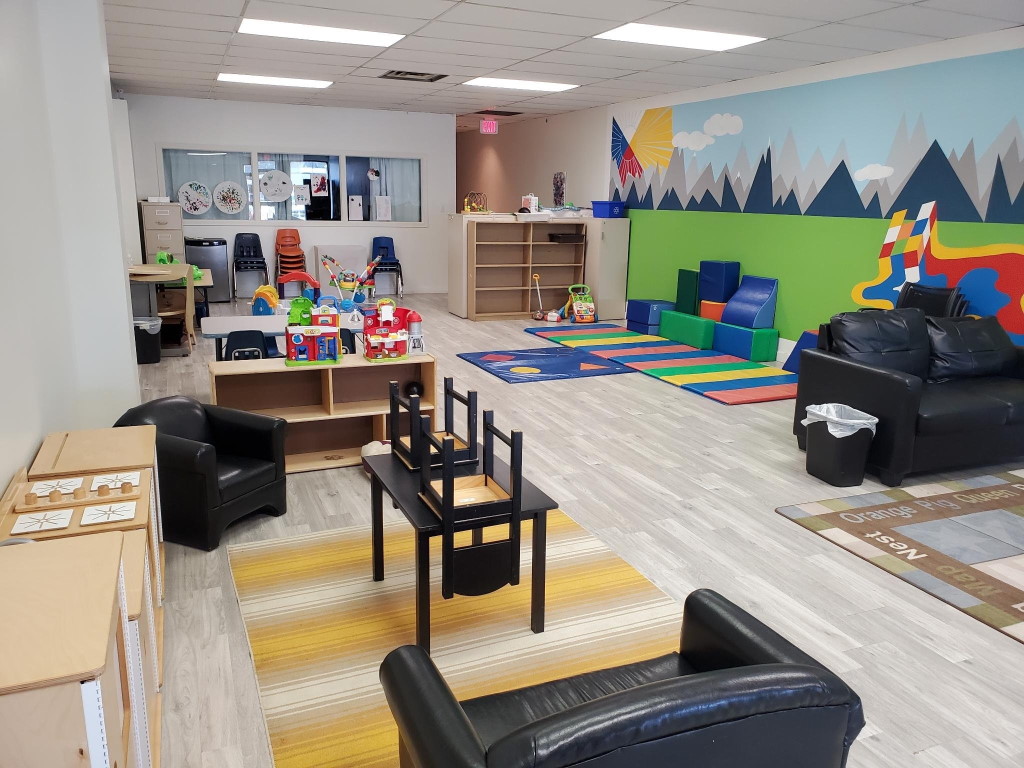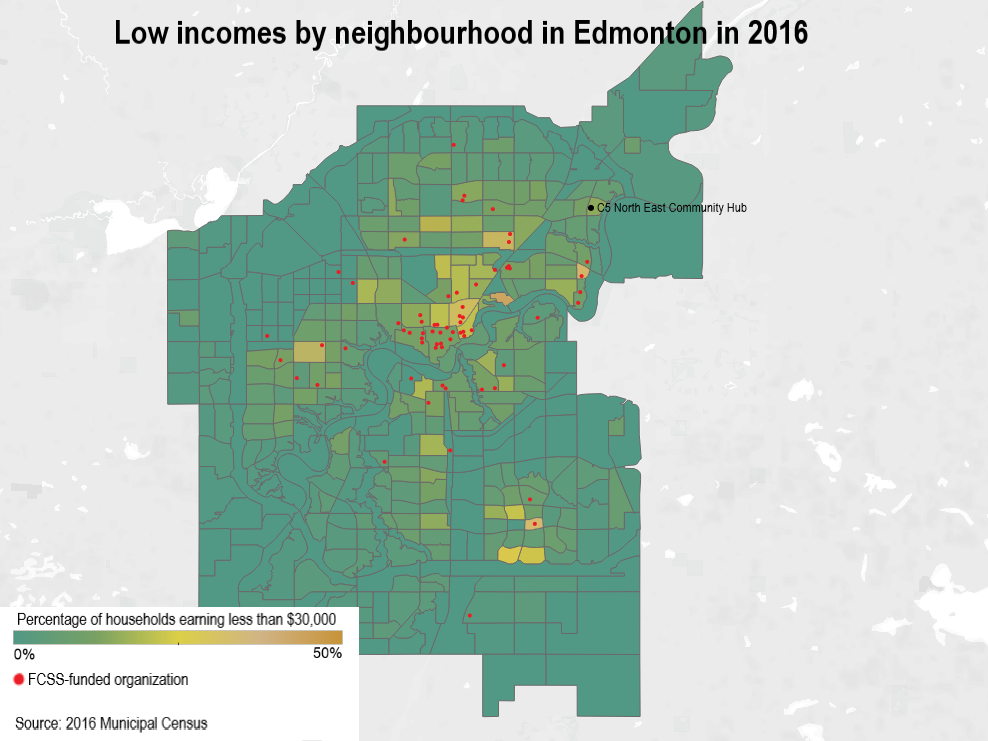This social-services experiment is working — could there be more?
The C5 North East Community Hub serves an area that needs it, but its future is not guaranteed, and its replicability is untested
Suzette Mercier was going through a rough patch taking care of her kids when she discovered a community services hub in her neighbourhood while idly scrolling through Facebook.
"I saw an advertisement for 'family night,'" she said, "I went to check it out as a way to get me and my kids out of the house for a bit, and it kind of took off from there."
Mercier has been dropping by the C5 North East Community Hub multiple times a week — COVID-19 permitting — for around two years now, and she said the hub has been an important factor in keeping her family together.
"Our whole experience has been extremely positive," she said. "My eldest daughter has been pushing me to get back to some of the programs that were running before (the pandemic) happened. She can't wait to go back."
Located in a dated strip mall just off Victoria Trail, the C5 Hub is an experiment in collaboration between five social service agencies: Norwood Child and Family Resource Centre, Terra Centre, the Edmonton Mennonite Centre for Newcomers, Bent Arrow Traditional Healing Society, and Boyle Street Community Services. Six years into its existence, the hub has around 750 families on its list of regular clients, said director Mohamed Elsaghir.
The hub is unique in Edmonton, both as a collaborative effort and as a source of comprehensive help in an area of the city that has few other social services. So far, it appears to be a success, and a potential model for other neighbourhoods with families in need, notwithstanding some challenges.
It's not guaranteed that the hub will continue to receive funding it needs from the City of Edmonton, however, nor is it certain that there is an appetite for funding similar hubs elsewhere. That will be for future city councils to decide, which is a reason to take a closer look at the C5 experiment ahead of the municipal election on Oct. 18.

Besides the experimental collective of social services, the strip mall is pretty typical, containing a laundromat, a takeout restaurant, and a couple convenience stores. (Jackson Spring)
Leveraging partnerships
The C5 Hub was set up six years ago, when the partner agencies decided to pool some of their resources. While it has grown since then, the partners are still working out the details of how best to work together.
"It's still very much in its experimental phase," Elsaghir said. "It's a lot of work and communication back and forth to make sure we aren't competing, but leveraging our partnership."
He said the hub's most successful experiment has been not just in co-locating agencies all in one building, but in integrating their services, which range from housing, employment, addiction counselling, mental health, and child and family services. The agencies share information and resources, familiarize themselves with each other's programs, and make what are called warm referrals: personally introducing clients to the other service providers, as opposed to just giving them a phone number to call.
"Integration is crucial in a lot of our clients' journeys," Elsaghir said. "We want to avoid them having to retraumatize themselves all the time — having to tell their stories again and again."

Chalk art welcomes families and individuals into the hub's main room, labelled "Community Space." (Jackson Spring)
Morgan Northey, the director of Boyle Street's northeast operation, Ubuntu, said that not only has she seen positive results for clients, but her organization benefits from having other services in the same place.
"One of our biggest roles is to connect families with resources around the city. That can get really tedious and tiresome when you're travelling from one space to another," she said. "You have to go to Capital Region Housing to help with housing applications, then to the food bank, and that's multiple days and multiple trips — and it's all downtown. It's all far away.
"The hub is a one-stop shop, and it's super easy for us."
Physically, the hub is filled with common spaces. "Welcome" is written on the sidewalk in a colourful, work-in-progress piece of chalk art just outside the propped open door. The large, main room has tables and computers for anyone to use. A common kitchen stocked with appliances and ingredients sits at the back of the room, while a children's playroom filled with toys is through a door to the side.
The office of Ubuntu is next door and accessible through a shared hallway, while the other agencies employ representatives who permanently work out of the hub.

The hub's common space includes a playroom for kids, available to clients of any of the five service providers. (Jackson Spring)
"If I'm having any issues, I know that I can go there, and they're probably going to have something I can use," Mercier said. "And it's not just one service trying to help in all these different ways. It's a bunch of services, all helping each other out."
But it's not just the combination of services that has been a boon for nearby residents. Before it came to be, the northeast side of Edmonton hardly had any social services at all.
Mercier, who has lived in the nearby Belmont neighbourhood for around five years, said the hub is the only place in the area that was able to help her out with food insecurity.
"A while ago, they started to do a bread run, and it would be a couple of times a week. If I needed some bread, I could run in there, and didn't have to go at a very specific time," she said, noting that the only other nearby place to offer something similar is the Freedom Centre Church, which offers a Breadbasket service in partnership with Edmonton's Food Bank, but only on Wednesdays from 9:30 am to 11 am.
"I'm sorry — if they're full, and I have to wait outside until it opens up and I can get in there, in the middle of winter, that doesn't work for me and three kids."
The northeast is not the only area that lacks resources. To compound the problem, many of the areas most lacking tend to include neighbourhoods with lower incomes, where the services are likely to be needed most.

While there tends to be more households with low incomes in central neighbourhoods with high overall populations, others have higher concentrations of low-income households, as a percentage of the neighbourhood's population.
The primary way the city funds social services agencies is through the Family and Community Support Services (FCSS) program, which is jointly administered by the municipal and provincial governments. On Edmonton's list of the 67 agencies funded by the program in 2021, 26 are headquartered downtown or in the immediately surrounding neighbourhoods of Oliver, Central McDougall, Boyle Street, and McCauley. This includes many of the most well-funded services, like the YWCA of Edmonton, The Family Centre, SAGE Seniors Association, and the Edmonton branch of the Canadian Mental Health Association. Another significant chunk of services are located around Strathcona and Bonnie Doon.
Conversely, many neighbourhoods have no or few nearby services on the list. This includes many poorer neighbourhoods — such as Abbottsfield, Balwin, Glenwood, and parts of Mill Woods — all of which have a relatively high concentration of households earning under $30,000 per year, according to 2016 Municipal Census data.
In theory, the hub could be replicated to provide comprehensive services to these areas, but Elsaghir said that funding uncertainties faced by the C5 Hub, and the way grants are distributed to social services in general, might get in the way.
Financial unknowns
Though the hub has been operational since 2015, it was really enabled to set up and expand its services by city council during budget discussions in 2018, with a $300,000 annual grant to cover operating expenses from 2019 to 2022. As part of the agreement, the hub was expected to demonstrate a set of outcomes.
A report from the city's administration supporting the funding noted that if the funding were not approved, the possibility that the hub would have to close indefinitely was likely.
Francis Asuncion, a spokesperson for the City of Edmonton, said that while the hub has met the short-term goals outlined by the funding agreement — more people accessing services, especially members of vulnerable populations such as immigrants, newcomers, and Indigenous people — the decision to continue its funding after 2022 is up to the next city council.
"It is premature to determine whether funding will continue at this time," Asuncion told Taproot in an emailed statement. "It would be a council-recommended budget decision at the end of their funding agreement."
Even if the C5 Hub does receive funding beyond 2022, other agencies trying to replicate the model may face barriers that stem from how social service agencies are funded by the city and province more generally.
The FCSS program offers annual grants to selected agencies adding up to a minimum of $5.6 million, with the province providing $22.3 million. Asuncion explained agencies are selected based on whether the service they provide aligns with the city's strategic plans, and whether they have a track record of providing adequate service, which is determined using audited financial statements provided to the city, as well as regular agency visits by city staff.
"Agencies must describe who they serve and demonstrate how they are using research, evidence, and emerging/promising practices to respond to program participants in the most effective way," Asuncion said.
Limited amounts of money means that not all agencies will be able to receive the grant, which has a tendency to set up agencies to contend with each other for funds, Elsaghir said.
"The limited access to resources makes it really competitive for organizations," he said. "That competition creates silos of funding. It becomes really difficult, especially for smaller or niche organizations."

Ubuntu specializes in working with children and youth, and has its own space next door to the hub. (Jackson Spring)
Creative solutions
Internally, the hub has come up with its own ways of mitigating competition. Not only do the partners share information and expertise, but financial resources as well.
"There are always times where there might be some friction points, but it's minimized through communication and figuring out creative funding streams," Elsaghir said. For example, Bent Arrow might have access to an Indigenous-specific source of funding, but it can apply on behalf of the entire C5 Hub, and all the partners will have a certain amount of access to those funds.
"All of a sudden that funding, instead of serving 100 community members, can serve 500," he said.
Northey said that Ubuntu has also been able to modify its operations and services in order to meet the needs of the partnership — which many social service agencies are hesitant to do.
"Sometimes people say 'these are the boxes that I need to check in my contract, and that's what I'm going to do,'" she said. "People need to be flexible. There has to be more willingness and openness to partnership and accepting that you are going to step outside of your box — and it's a give and take."
Organizations being unwilling to form partnerships and step outside the box is also partially a consequence of the way grants are distributed, Northey added.
"Funding always comes with very specific requirements around it, and sometimes that doesn't lend so well to creativity," she said. "If you're funded so specifically to do one thing, it cuts off what you can do for everything else."
When the C5 was created, Ubuntu and the partner agencies were dedicated to the concept, and signed on with a willingness to put aside that competition for the greater good. Northey said that Corinne Saad, the hub's previous director, and Elsaghir, who started out as its senior manager, "had such a vision, and have this vivaciousness where they can get people to follow their vision."
But if other agencies wanted to pursue a similar collaboration, they would have to overcome the barriers of a highly competitive sector, reinforced by limited available government funding, and a narrow selection process for who gets it.
"The biggest barrier is funding, and overcoming that competition," Elsaghir said.
"But, if we can pull that funding together and continue to find ways to work together, that funding will be able to go a lot further."
The idea to do a story about the C5 hub emerged from a discussion during one of Taproot's listening sessions on the People's Agenda, our project to ground our municipal election coverage in issues that are important to Edmontonians.
